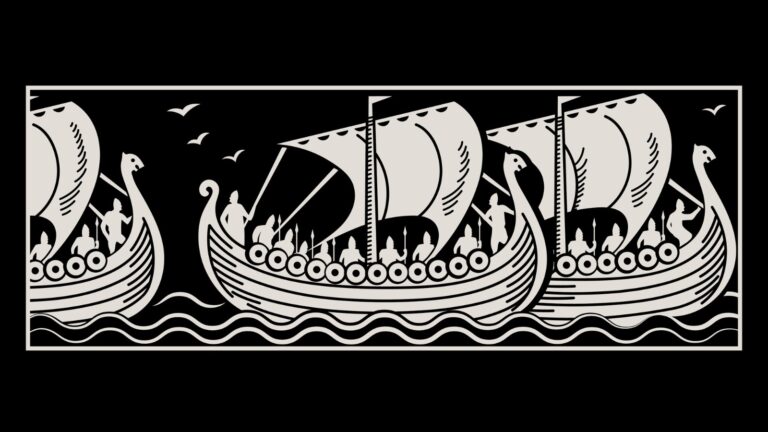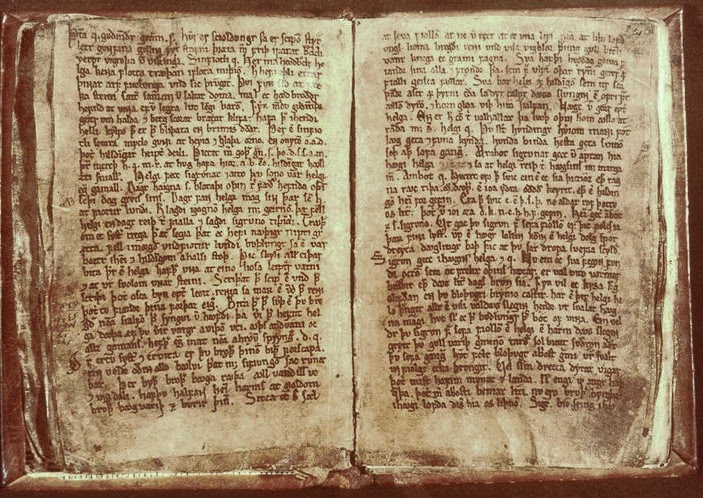The language that shaped the Viking Age, Old Norse left an enduring legacy in literature, mythology, and modern languages. Let's explore its fascinating history and lasting influence.
Language is more than words—it’s a gateway to culture, history, and identity. By exploring a language, we uncover the values, beliefs, and stories of its speakers.

We're taking a break from our articles on learning modern Norwegian to head back into the history books.
Today, we’re diving into Old Norse, the language of the Viking Age. For several centuries, this fascinating tongue was spoken across Scandinavia and beyond, leaving its mark on history, literature, and even modern languages.
An Introduction to Old Norse
Old Norse was a North Germanic language spoken in Scandinavia during the Viking Age, roughly from the 8th to the 14th century. It was the common tongue of the Norse people, who were known for their seafaring, exploration, and trading prowess.
At its height, Old Norse spread far beyond the borders of modern-day Norway, Sweden, and Denmark, following the routes of Viking expansion to places like Iceland, Greenland, the British Isles, and even parts of modern-day Russia.
Old Norse developed from Proto-Norse, the language spoken in Scandinavia during the earlier Germanic Iron Age.
Over time, it evolved into distinct dialects, primarily Old West Norse (spoken in Norway, Iceland, and the Faroes) and Old East Norse (spoken in Denmark and Sweden).

These dialects were mutually intelligible but displayed regional variations in vocabulary and pronunciation.
The Structure of Old Norse
Old Norse was a highly inflected language, with a complex system of grammar that included three genders (masculine, feminine, and neuter) and four cases (nominative, accusative, genitive, and dative).
Verbs were conjugated based on tense, mood, voice, and person, while nouns, adjectives, and pronouns were declined according to their grammatical case.
This structure allowed for flexibility in word order, as the endings of words often indicated their function in a sentence.
Additionally, Old Norse featured a rich vocabulary that reflected the everyday life, seafaring culture, and mythology of the Norse people.
Old Norse in Literature
One of the most enduring legacies of Old Norse is its rich literary tradition. The Icelandic sagas, written in Old Norse, are some of the most significant works of medieval European literature.
Read more: Heimskringla: The Icelandic Saga of the Early Norwegian Kings
These stories, which include the sagas of the Icelanders and the legendary sagas, provide insights into the lives, beliefs, and conflicts of the Norse people.

Other notable works include the Poetic Edda and the Prose Edda, which contain myths, legends, and poetry about the Norse gods and heroes.
The Influence of Old Norse on Modern Languages
Old Norse has had a lasting impact on many languages, particularly English. During the Viking Age, Norse settlers and raiders brought their language to the British Isles, leaving behind hundreds of loanwords.
Everyday words like “egg,” “bread,” and “window” have Old Norse roots, as do place names ending in “-thorpe” and “-by.”
In Scandinavia, Old Norse evolved into the modern North Germanic languages: Norwegian, Danish, Swedish, Icelandic, and Faroese.
Among these, Icelandic has remained the closest to Old Norse, with minimal changes in grammar and vocabulary over the centuries.
Learning Old Norse Today
While Old Norse is no longer a living language, it can still be studied and appreciated. Many universities offer courses in Old Norse, particularly as part of medieval studies or Scandinavian studies programs.
There are also online resources and textbooks available for those interested in exploring this ancient tongue. Learning Old Norse can deepen your understanding of Viking history, Norse mythology, and the development of Scandinavian languages.
Reconstructing the pronunciation of Old Norse relies on spellings in manuscripts, rhymes in poetry, and runic inscriptions. There was no standard spelling, and regional variations meant that reconstructed pronunciations can differ among scholars.
A practical approach is to use Modern Icelandic pronunciation, which is similar to Old Norse. This method not only aids comprehension but also provides a foundation for learning Modern Icelandic.
It’s been said that a Viking and a modern Icelander could hold a basic conversation, as the grammar and core vocabulary have changed little over time.

